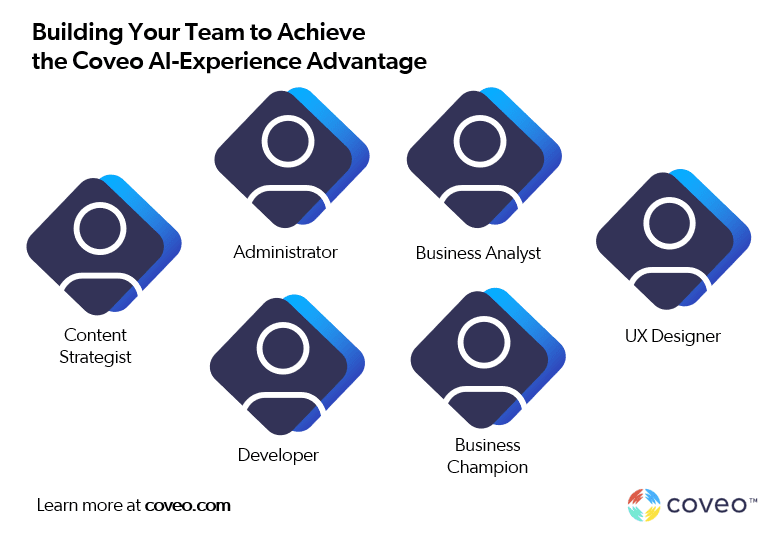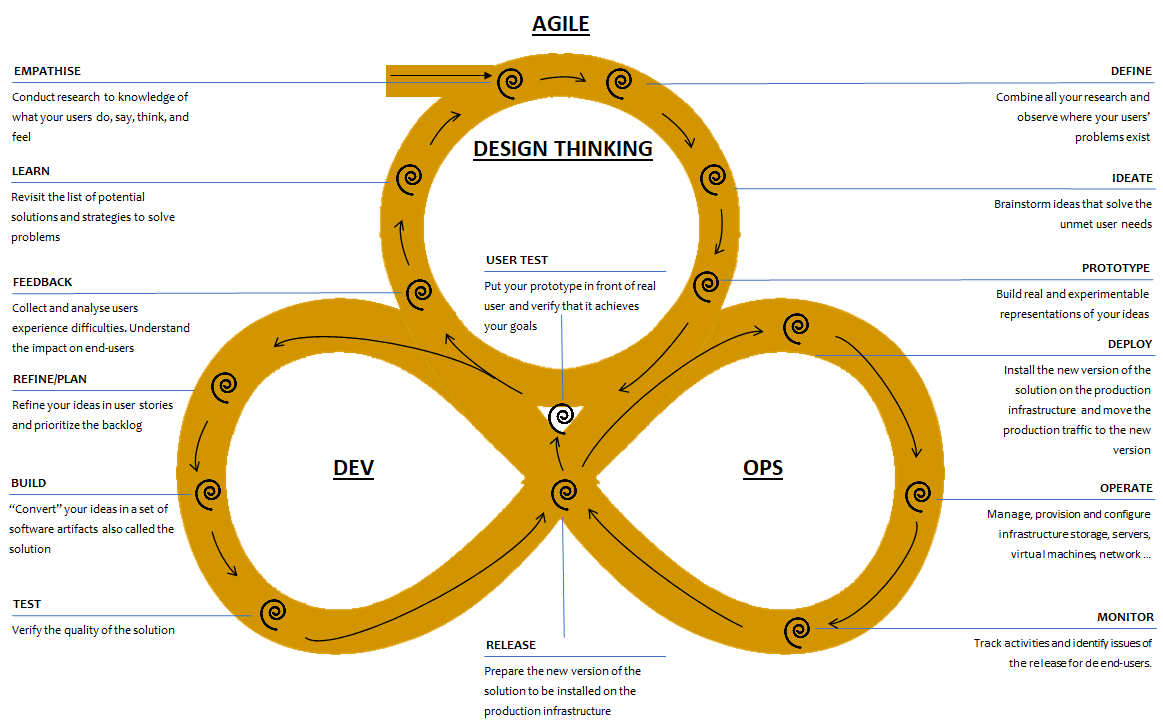Developing corporate systems can be tricky — not so much for the initial launch, but for the ongoing upkeep, development, and innovation. For those of you who are customers or looking to procure Coveo Platform™ it’s important to note that our software is both SaaS and PaaS — and guarantees a regular stream of innovations. However, to fully reap the benefits, you need to have the capability to effectively roll out these enhancements.
In building Coveo@Coveo, a comprehensive initiative of using Coveo’s AI search platform to power a myriad of use cases, we needed to make sure we had the right expertise.
Certainly, it’s normal to kick off with a lean, flexible team covering various roles, and then gradually specialize roles as the deployment evolves. In fact, many companies have begun their Coveo journey with just one person and expanded as they saw the benefits and aimed to boost their strategic results.
In outlining the key roles, I’m skipping over the exact size of the team. Team size can fluctuate based on a company’s size, deployment maturity, among other factors. A single person will usually have multiple roles. Also, Coveo is easy to manage, so these are not full-time job either.
Further, the insights shared here shouldn’t be taken as an inflexible plan to avoid failure, but rather as a helpful guide for forming your team in the short, medium, and long run.
Identifying the Team
Our team setup at Coveo is a good example of what most companies would need.

(It’s important to point out that since we don’t have online transactions, Coveo for Ecommerce is not covered here. Implementing Coveo for Ecommerce typically requires a different set of roles from the ones discussed here. If you’re looking for more information on this topic, feel free to reach out to us.)
Now, let’s dive into the main roles.
Administrator
The Administrator plays a critical role in managing and configuring the Coveo platform. They are responsible for setting up indexing, maintaining security settings, and ensuring that the system operates smoothly while paying meticulous attention to security measures. This role requires a keen eye for detail and a deep understanding of Coveo’s configuration capabilities.
As a custodian of security, the Administrator is entrusted with safeguarding sensitive information and ensuring that access controls are implemented effectively. By maintaining stringent security settings, they uphold the confidentiality and integrity of data within the Coveo ecosystem.
Business Analyst
The Business Analyst serves as the bridge between business needs and technical implementation. They gather requirements from stakeholders, analyze user behavior, and identify areas where Coveo’s intelligent search and recommendations can drive tangible value. Strong analytical and communication skills are essential in this role.
Developer
The Developer is tasked with implementing Coveo’s functionalities within your organization’s digital ecosystem. They create custom components, integrate Coveo APIs with existing systems, and optimize the platform for seamless performance. A solid understanding of web development and Coveo’s API capabilities is crucial for this role.
Business Champion
The Business Champion is a pivotal role that represents the end-users and champions the adoption of Coveo across the organization. They provide invaluable feedback, advocate for best practices, and ensure that Coveo aligns with the company’s strategic goals. Building strong relationships with key stakeholders is central to the success of this role.
Content Strategist and UX Designer
Mathieu Drolet, who is responsible for much of our technical development, reminded me that two other roles are very important: Content Strategist and UX designer. In fact, we have found that lack of content strategist/domain expert and UX designer not only slows down the project but also impacts the quality of the solution delivered.
Importance of Partners
Coveo customers often fill some of these roles by collaborating with our trusted Partners. They can assist in finding the right candidates for these positions, while also bringing a wealth of Coveo expertise and experience right from the outset.
These experts understand the intricacies of Coveo and can seamlessly guide you through the implementation process, ensuring a smooth and successful deployment.
Minimum Infrastructure Requirements
Your agile and adaptable team must have the ability to experiment, test, encounter challenges, configure, and deploy changes seamlessly without impacting your users. To achieve this, relying solely on your production organization may not suffice.
We use the triple loop as our north star when developing.
As much as we would love to follow it exactly, unfortunately, it would require a much bigger team with specialized people. When things move too fast (which is 99% of the time!) we have to cut a few corners.
The bare minimum requirement is to have at least one non-prod org, but the most dynamic and efficient deployments I’ve witnessed incorporate multiple non-prod orgs. This approach offers increased flexibility and speed when it comes to testing, deploying new features, and resolving issues.
Here at Coveo, we practice what we preach by employing two non-prod orgs (Development, UAT/Staging). This allows us to validate changes thoroughly before they reach our Production environment, ensuring a smooth and reliable experience for our users.
Our non-prod orgs serve as valuable playgrounds where we can innovate fearlessly, experiment with new configurations, and resolve potential challenges, all while keeping our Production environment stable and secure.
By having well-structured non-prod orgs in place, your team gains the confidence to explore and iterate without disruption, ultimately leading to a more seamless deployment process and a greater ability to meet user needs. These non-prod environments act as critical enablers for maintaining the highest level of performance and reliability across all Coveo deployments.
By carefully defining and incorporating these key roles into your Coveo team, you can build a foundation for success. Remember, your team’s structure should be agile and adaptable, allowing it to evolve alongside your Coveo deployment journey.
Should you require any additional insights or guidance on structuring your team, feel free to reach out by sending me an email.
In my next blog, I’ll detail the various use cases where we’ve leveraged Coveo@Coveo to resolve knowledge issues.
Dig Deeper
In this whitepaper, President of StarCIO Isaac Sacolick explains how you and your team can easily drive innovation across your enterprise with AI search.





